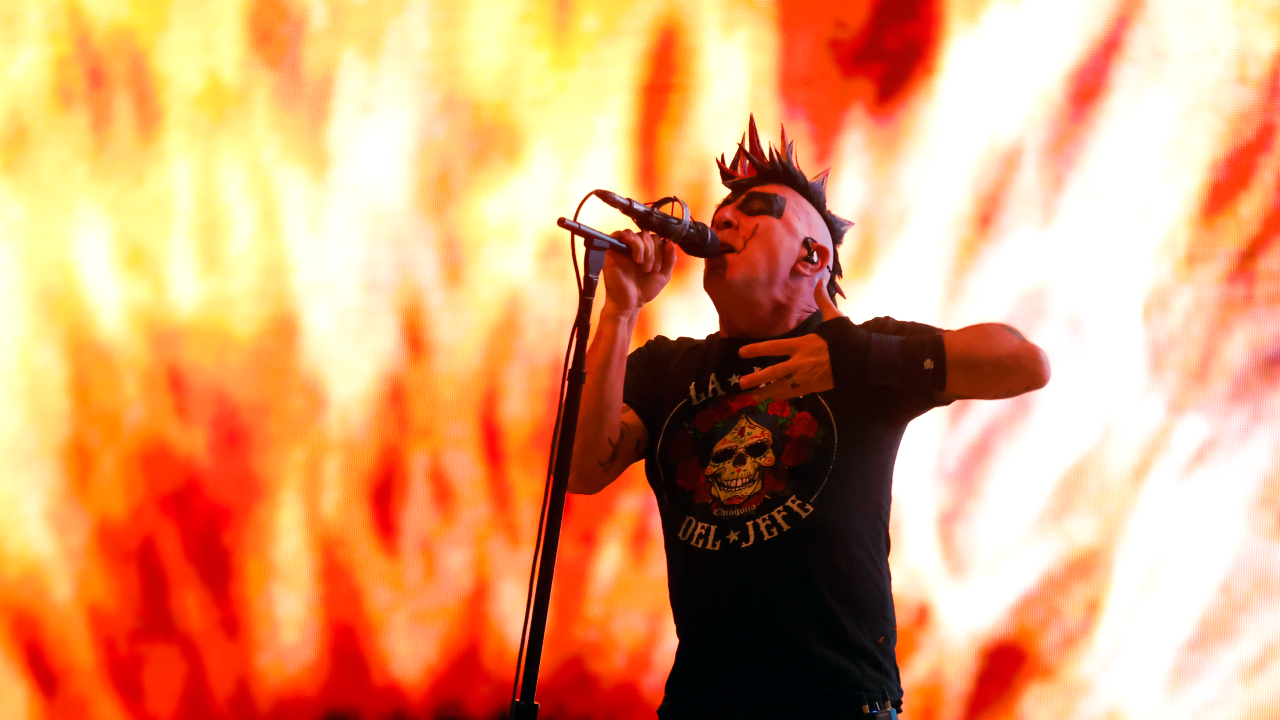“I have my own ways of ritual magick, but not in the typical way that most people would imagine. We’re not all Victorians, are we?”: The otherworldly story of goth mystics Fields Of The Nephilim
Fields Of The Nephilim frontman Carl McCoy on magick, mysticism and fake drug busts
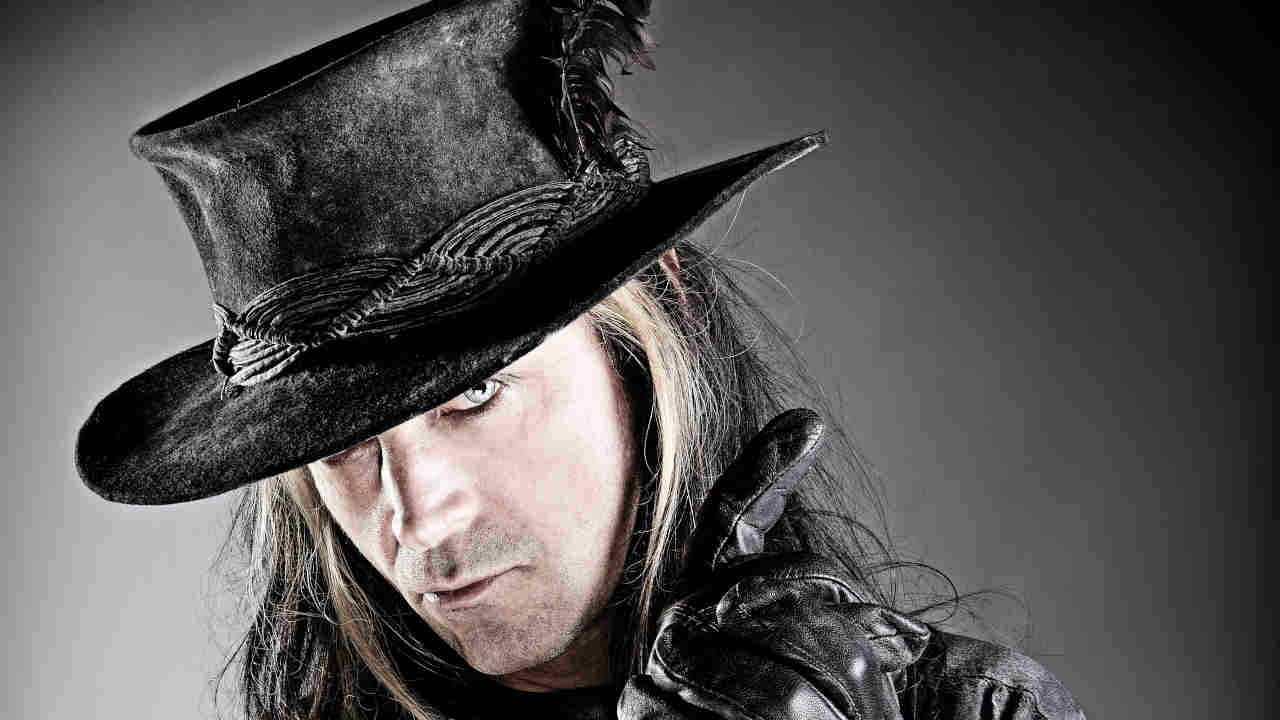
Fields Of The Nephilim rose during goth’s 80s heyday, looking like a cross between Victorian undertakers and the stars of a spaghetti western. In 2012, as they prepared to release live CD/DVD, Metal Hammer caught up with singer and sole original remaining member Carl McCoy to talk mysticism, metal and unfortunate ‘drug’ busts.

There is always a pattern in life. Just because you can’t see the pattern, it doesn’t mean there isn’t one. It means you are standing too close to the subject to make it out or you haven’t studied it for long enough. The 28-year career of English gothic rock band Fields Of The Nephilim can seem strange – perhaps full of wrong turns and missed opportunities when taken at face value. To see a pattern in the chaos, one has to pay close attention.
They formed in Hertfordshire in 1984, incorporating elements of psychedelic rock and heavy metal into the era’s predominantly post-punk, goth sound, drawing on Victorian art and spaghetti westerns for their striking image and delving into the occult for their philosophy. They wanted to be “the alternative to the alternative”, and their first album, Dawnrazor (1986), and early singles such as Moonchild and Psychonaut, gave the UK scene a much-needed shot in the arm, revitalizing the sound by introducing metal’s power and urgency into the sonic mix. Not only would they be an influence on goth metal acts such as Paradise Lost and Nevermore, but on later extreme metal groups such as Cradle Of Filth and Behemoth. But when they were at the height of their popularity and their powers after the release of Elizium in 1990, they fell apart in disarray.
The creative driving force behind the band, singer Carl McCoy, had always been ill at ease with being a rock star, but it seemed that now he had started retreating into a world where he had little contact with his audience. He may have gained an impressive degree of artistic control by withdrawing from people, but at what cost? Working mainly on his own, he may have recorded the fantastic industrial death metal album Zoon in 1993 under the name Nefilim, but it would be three years until it saw the light of day and Fields themselves wouldn’t return properly until the release of Mourning Sun in 2005.
By this time, Carl had abandoned touring in favour of one-off gigs with anonymous session players he referred to as “ghost musicians”. But something else was going on. Between their rebirth and a pair of sold-out Hammer-sponsored nights at London’s Shepherds Bush Empire dubbed the Ceremonies in late 2008, there was a year-long series of gigs held around the globe. Fans and casual observers alike could be forgiven for thinking these shows were chosen at random, but considerations like when the venue was cheapest or when certain road crews were free were furthest from Carl’s mind.
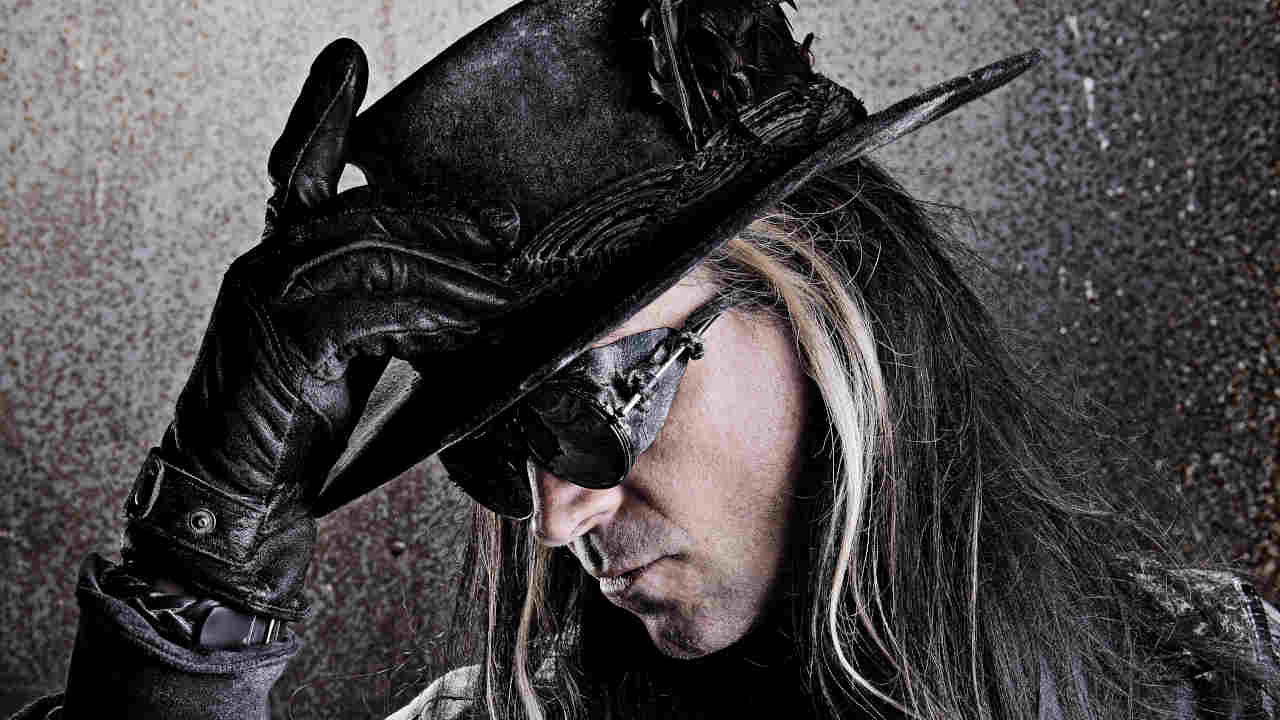
When they took to the stage in Helsinki, Finland, on December 29, 2007, it wasn’t a coincidence that it was also the anniversary of the death of the Russian visionary mystic Grigori Rasputin. On March 15, 2008, the band travelled to Poland to play Warsaw’s Stodola venue. Again, no coincidence that this was the anniversary of the death of HP Lovecraft, the author responsible for the greatest occult fiction ever and a huge influence on Carl’s lyrics. When they played in the Greek city of Athens on March 21, it coincided with The Equinox Of The Gods, or the New Year in the Thelemic Calendar, Carl’s religion of choice. This pattern would be continued until the final Ceremony itself, which was on July 13, 2008, the birthday of John Dee, the black magician employed by Queen Elizabeth I as astrologer and necromancer.
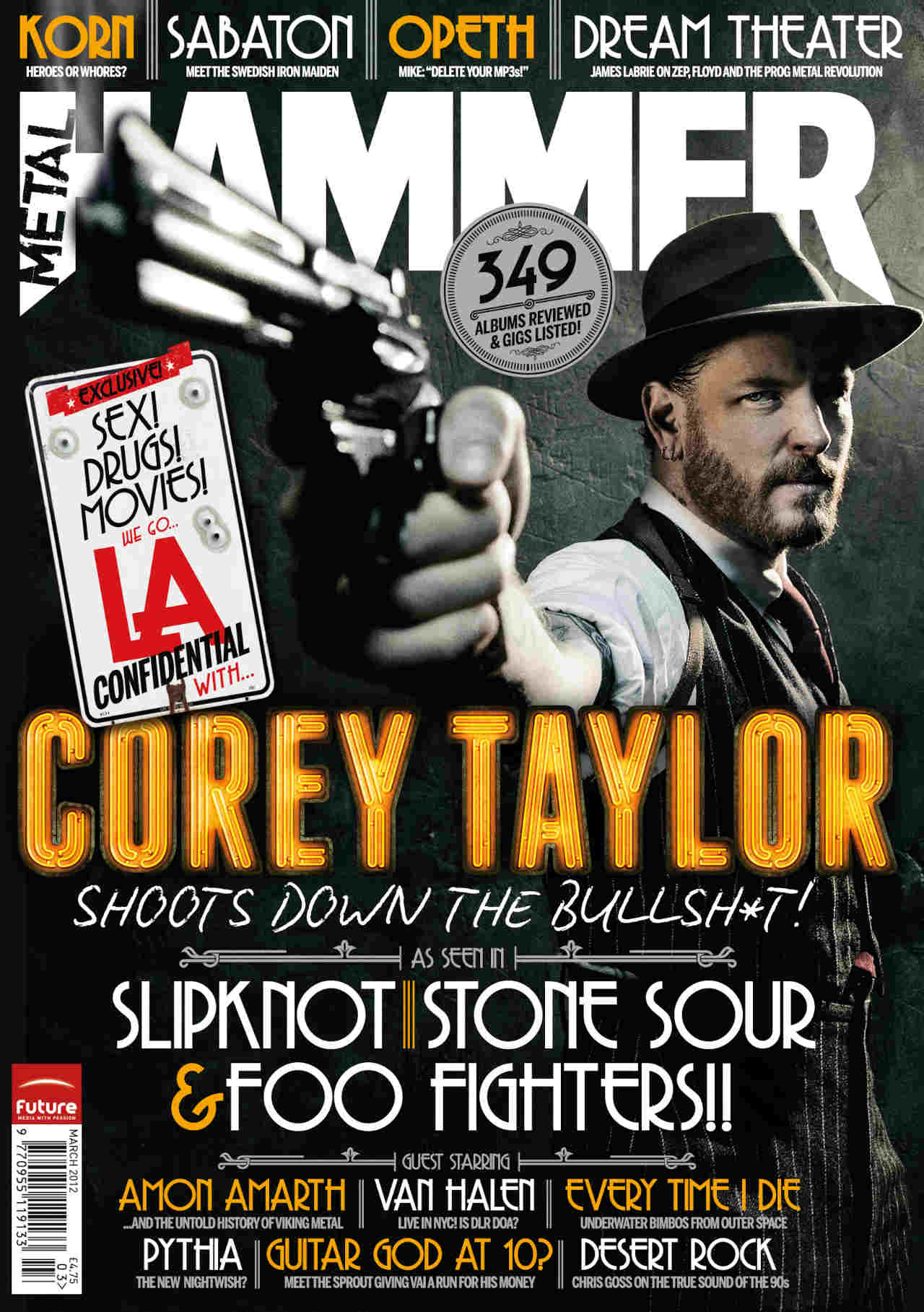
The rebirth of Nephilim was a colossal magickal ritual, traversing the globe in space and covering many years in time. It was intended to harness the power of their fans and history itself to help resurrect the group as a new entity for the 21st Century.
Carl, who’s always refused to talk directly about his belief in the occult and ritual magick, admits that the string of concerts were part of a bigger plan: “Nephilim gigs are different to going down The Dog & Duck to get drunk and watch an AC/DC tribute band. I take a different approach to what Nephilim concerts are and what they mean. They are a ritual because they’re collaborations with the audience – we become like one. When we play live there is no longer a ‘them’ and an ‘us’ because our audience is quite special. All of the shows that we’ve done over the last few years, up to the Ceremonies events at Shepherd’s Bush, have been held on specific dates. I have never mentioned this to anyone before but I’ve got a record of a lot of births and deaths of inspirational people. It was part of a bigger plan.”
Carl, who is a lot more down to earth than his austere image suggests, allows himself a little chortle, when his obsessive fanbase, who pore over everything he does in forensic detail, are mentioned. “Yeah, not even they realised,” he admits. “No one found out. I’ve never mentioned it before now.”
We’re talking to him today because now you too can see and hear the fruits of his seven-year labour. The two final gigs were recorded and filmed and are being released as a CD/DVD box set. “The Ceremonies project is about crystallising a point in time which embodies magical moments created by Fields Of The Nephilim,” he reveals. “Having focused on the live elements over the last few years, this represents a closure and regeneration. Ceremonies is a representation of where we are now, from this point we move forward. We continue to evolve.”
The reason it’s taken so long to appear isn’t that Carl has been waiting for planets to align, but simply because he insists on doing most things himself. “I don’t think becoming self-sufficient as a musician, producer and editor was something I intended to do,” he muses. “It’s a lot of work. Back when the first incarnation of The Nephilim disbanded in 1991, I wanted to do a project by myself and have control over my vision. I did initially include a couple of producers at the time and I wasn’t happy with the results. They couldn’t picture where I was coming from, so that’s where it started.”
When asked if he thinks the occult ritual for ending one period of the band’s history and kickstarting another has worked he pauses for a long time before saying: “I feel like I’ve been trapped in limbo for a very long time, but now it’s time to move on. I feel it’s time to do what I do best, which is producing new music and getting out there and performing live. It’s been a long time since the band started and I do like to go forward rather than backwards.
In practical terms, does this mean that there’s going to be new album?
“There will be new material, but whether that appears as an LP straight away or a series of EPs, I don’t know,” he answers. “I kind of like the idea of EPs, but I don’t know. I have been speaking to my label, EMI, about this. I’ve been working on new material for the last four months, and now it’s time to get in the studio, get my head down and get some new music out. I should have something out in six months’ time. That sounds about realistic to me.”

Carl’s spiritual journey through life has been a complicated and individual one. And that, as he doesn’t mind telling you, is the whole point. He simply wants his fans to think for themselves. In very loose terms he is a follower of new age religion/spiritual philosophy of Thelema. A century ago, notorious magician, free thinker, drug fiend and top flight mountaineer Aleister Crowley had a vision which became the basis of Thelema and its bible, The Book Of The Law. Crowley’s anarchic idea was that the 20th Century would see the birth of a new era of morality governed by one rule only: Do what thou wilt shall be the whole of the law.
Followers, or Thelemites, are supposed to rid themselves of outside conditioning and the desires of their ego and follow their one true will. Carl still sees himself as a spiritual person with magickal and shamanic beliefs: “I’ve always seen myself as a spiritual person no matter how wanky that sounds. I’ve always felt like that. I don’t know if it’s anything to do with my upbringing [as a Jehovah’s Witness] or just the way I am, but nothing changes around me and the person you see on stage is the real me.”
Thankfully he ignores us when we ask if he’s the real McCoy on stage, and continues: “The person off the stage is the person who is trying to get on in life and be sociable. People presume that you get on stage and put on this persona. Nah! It’s the other way round. The person onstage is the real me. That’s where I feel more comfortable. I don’t think when I’m on stage. This may be a shamanic approach to life but it’s in a natural way. It’s not forced or something I have to read about or share with anyone.”
Hopefully if you connect with metal on a deeper, philosophical or moral level, this is something that may be chiming with your own belief system. Metal’s fascination with Satanism is a very complex thing and should never be taken at face value or be generalised as just one thing, but for many of us, the Devil exists only as a metaphor for the exertion of self- will in opposition to power structures of religion and other forms of authority that stamp down on individualism and rebellion. This is something that sounds eerily familiar to Crowley and Thelema.
“Loosely I’d agree that these philosophies are similar,” Carl concedes cautiously. “The thing for me is that it’s more of an individual approach. Crowley I guess was similar in that respect. I certainly find there is nothing I desire from [my occult beliefs]. It’s not about me gaining things. The outcome I want from my beliefs is merely inspiration. If my beliefs can inspire me creatively and they can inspire the Nephilim audience as well, then I think that’s my purpose in life, because that in turn inspires me.”
“There is no harm in it,” he insists. “I’m not dabbling with people’s heads too much. I’ve spent my life following my own path seeing where it will take me but there has never been any sense of, ‘Oh, I must read this book and cast this spell’ because that’s just the writing of men. You must think for yourself.” He adds that perhaps the biggest link between Nephilim and metal is through the sound not the philosophy. “It’s an attitude thing,” he notes. “We had to get the grittiness into our music right from the beginning. Zoon [the band’s most overtly metal statement] is probably the album I’m most happy with. That and The Nephilim, they’re the only ones I go back to.”
“Crowley was misunderstood,” he adds, appealing to anyone reading this piece who is interested in the so-called dark arts. “All people know about is ‘The Great Beast’, but there was more to him than that. By all means read his writings, but you have to bring out your own understanding of it, not someone else’s point of view.”
As for being specific about his own occult practices, Carl is as coy as ever and will only say: “I have my own ways of ritual magick. I have my own rituals that I perform but not in the typical way that most people would imagine. We’re not all Victorians, are we?”
So he doesn’t wear a wizard’s hat?
“No, I wear a pillow case! Ha ha ha!”
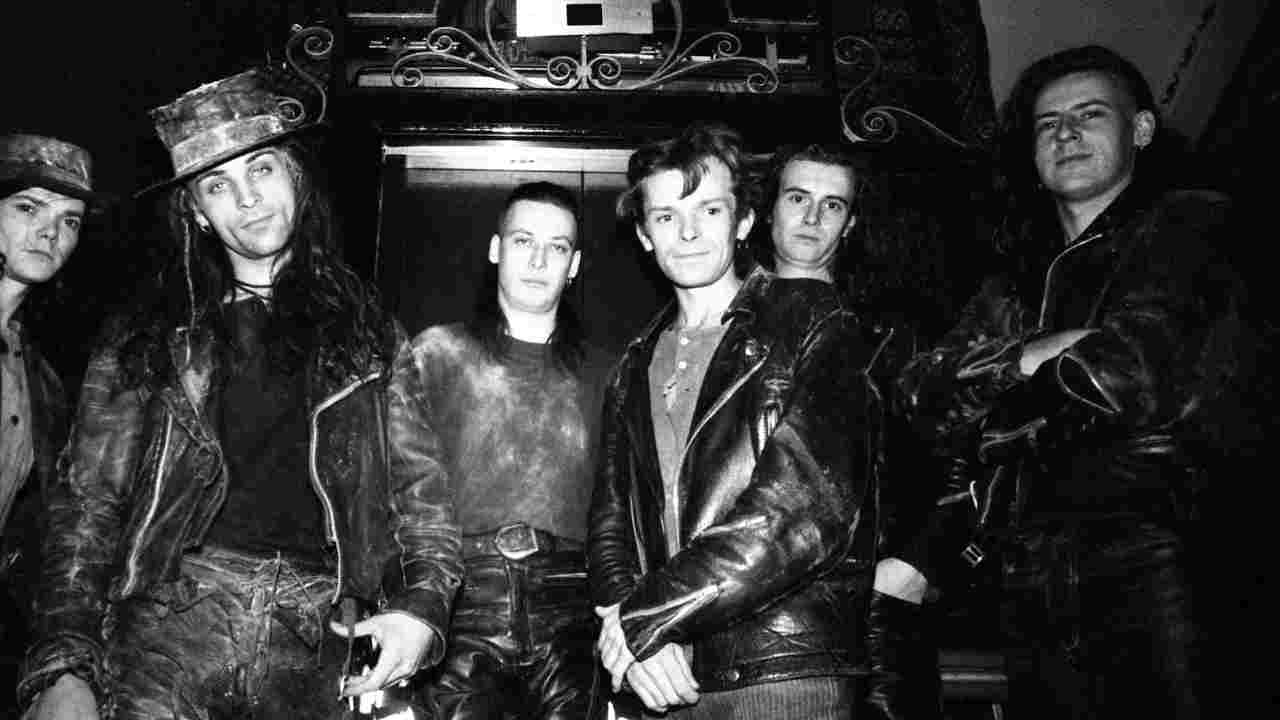
The influence of Fields Of The Nephilim stems not just from their music and magick but through their highly individual image. If goth was a genre that prided itself on individualism, then The Neff were the most individual of the lot. Decades before you could buy alternative clothing off the peg in stores, the Nephilim created their own look in true DIY fashion.
“I was always inspired by a lot of Victorian imagery and films like Once Upon A Time In The West,” Carl explains: “The combination was Jack The Ripper meets The Man With No Name. I used to make my own hats. I’d fashion them from top hats and Stetsons and sew them all together. You couldn’t actually get clothes like the stuff we wore. I don’t think we actually went out and bought anything apart from the obvious stuff like boots. I came from a bike background so I always had shitty old leathers that I could use. The coats and the hats were quite significant at the time but we used to throw them together ourselves.”
And it wasn’t just the floor-length coats that the band bequeathed to the goth scene of the last 20 years. It has become regular for artists to wear weird contact lenses, but when The Nephilim kickstarted this craze in the 80s it was unheard of. “I used to get mine from a guy who made them for BBC dramas,” admits Carl. “It was very much to do with my grandfather. I used to look like him except he was blond with very pale eyes. I had this old photo of him and I had some lenses made so I could look more like him. I guess I was always one for not wanting to be seen. It’s what it all comes down to, the hats with wide brims, the contact lenses, shades… I’m still the same really; I’m still essentially a shy kid, even though I’ve picked a funny career for some- one who doesn’t like being recognised. I was hiding behind all those things. I still am.”
But perhaps the most individual aspect of the Nephilim look was created by using the humble bread-making ingredient, flour. If you went to see the band in the 80s, you couldn’t come out of the venue without being coated in the stuff. Fans would take bags of the powder to gigs to toss over each other and into the air, and between that and the dry ice it was sometimes difficult to see more than a few feet in front of you while they were playing. When the word ‘flour’ is mentioned, Carl starts laughing.
“It was part of our dressing down thing,” he chuckles. “We hated glam bands, so we wanted to look as grimy as possible. Also, there were some very eccentric people in the lineup and none of us were alike, and if you put us in a room together you wouldn’t know we were in a band. We were doing a photoshoot one day and we had some clay dust with us, and we covered ourselves in it just so we would look more like a gang. Then we started using flour and it stayed with us. We used to love going to parties where other bands were there. You’d know we’d been there because there would be flour handprints on the backs of people’s jackets and around their shoulders. It was proper dressing down and people stayed away from us because of it.”
Which brings us neatly to one of the more unlikely sounding stories that has attached itself to the band. Didn’t The Nephilim’s use of flour end up with them as the wrongful victims of a massive drug bust?
“Yeah!,” he laughs again. “We got nicked in Nottingham Rock City by the police who thought it was cocaine. The fans used to put the flour in little plastic bags to take it to the gigs so they could coat themselves with it. Some of the bandmembers had fans back at the hotel with them that night and in the morning one of the cleaners found one of these polythene bags with a ball of white powder in it. So the police came down and they got onto the tour bus and they found 12lbs of this stuff. Ha ha! So we all got arrested and got carted away.”
So they thought they’d found 12lb of cocaine! They must’ve been getting ready to take the rest of the month off…
“I know, we got half a page in The Daily Mirror for that one!”
Beat out the flour, brush off the dust, knock out the dirt. Look closer and closer underneath until you can see the pattern emerging from the chaos.
Originally published in Metal Hammer issue 228, February 2012.
Fields Of The Nephilim tour the UK in October 2025. For details visit their website.


